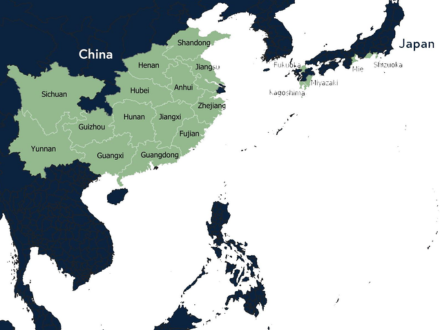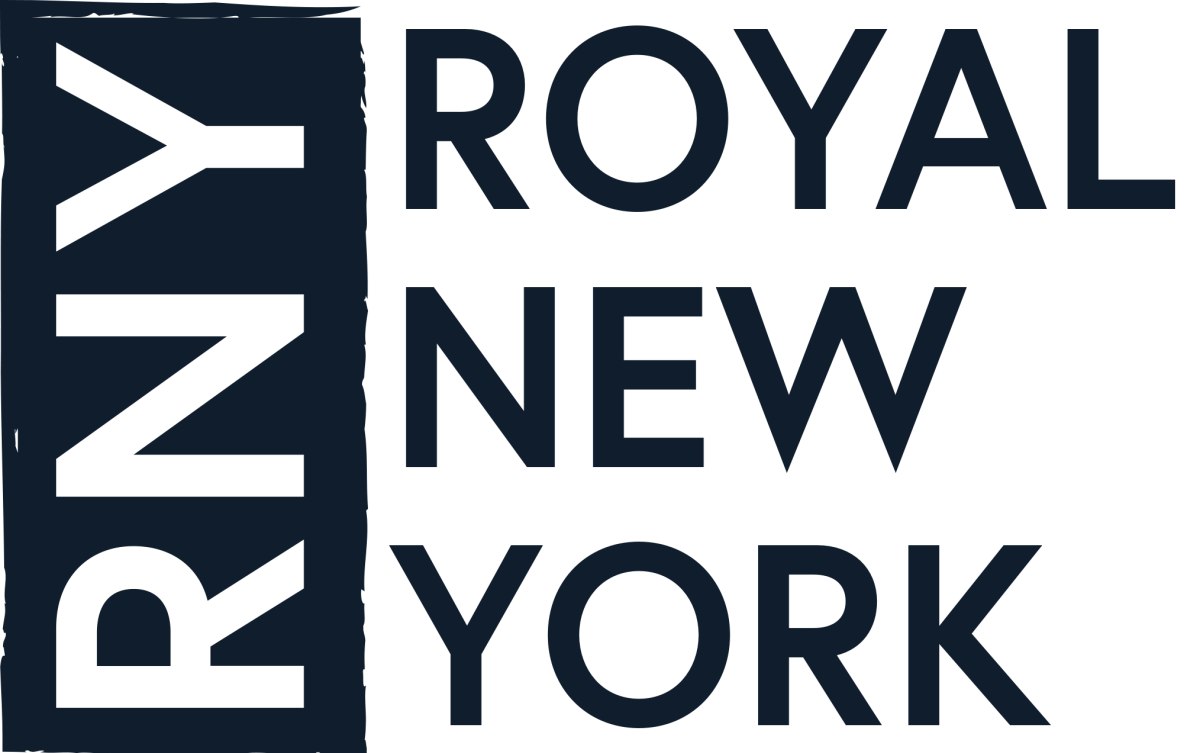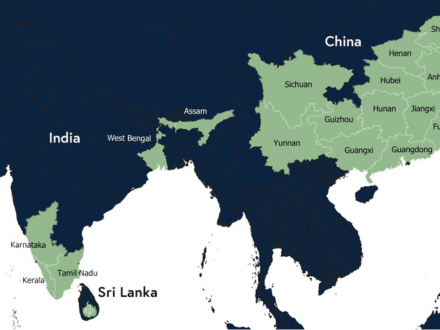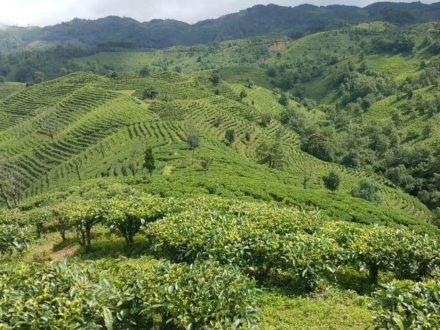January 3, 2024
Tea Origin Profile: Japan

Explore the source of Royal New York’s wholesale tea from Japan! Japan produces mostly green tea. Japanese green teas are world renowned for their consistency and quality.
Japanese Teas Fast Facts
Total Production: ~80,000 tons
Approximate Breakdown by Type: 98% Green Tea
Sencha: 60%
Bancha: 30%
Kabusencha: 5%
Matcha: 3%
Gyokuro: 1%
Common Varieties: Yabukita, Yutakamidori, Saemidori, Okumidori
History of Japanese Teas
Tea in Japan was originally introduced from China around 800 years ago. They compressed the tea in cakes that would be ground into powder known as muo cha. This style of tea was extremely popular in Japan and they refined it into a strict ceremonial procedure. They continue to make a similar product today, Matcha.
As loose leaf tea became more prevalent in China, there were many modernists in Japan who promoted the new way of consumption. To prepare the loose leaves, the Japanese developed a new method of Sha Qing or preventing oxidation through steaming instead of pan firing which was common in China at the time. The tea may be produced as Asamushi, Chumushi, or Fukamushi which are light, medium, or heavy steamed, respectively. They produce Japanese teas on relatively larger estates with flatter lands which allows them to use machinery to pluck their harvests.
While domestic consumption of green tea has been declining, there has been stability in RTD tea options, and producers are starting to experiment with black and oolong tea production. The global demand for matcha has continued to increase as Matcha becomes increasingly popular across Europe and North America. Japanese tea houses are also looking to modernize the tea experience that many younger people view as antiquated or old-fashioned.
Japanese Teas Growing Regions

Shizuoka
Shizuoka is the largest tea producing region in Japan. It produces roughly 40% of the country’s total. This region produces the best Fukamushi or deeply steamed sencha, but also produces bancha and some matcha.
Kagoshima
This is the second largest producing region in Japan at about 33% of the total. Kagoshima produces a wide range of sencha, bancha, and matcha and it has a relatively high amount of varietal diversity.
Mie
Mie is a small growing region at only 7% of the country’s total, but it is the largest producer of Kabusencha. They shade this tea for 7days prior to picking resulting in more sweetness and complexity.
Kyoto
The Kyoto prefecture, specifically Uji,was where tea was first introduced to Japan and it maintains some of the highest quality. Kyoto produces relatively the highest portion of matcha compared to other regions.
Fukuoka
Fukuoka produces a relatively small amount of tea, but it produces nearly half of the country’s Gyokuro. They shade Gyokuro from the sun for up to three weeks before it is harvested. This long time in the shade reduces any astringency and increases the relative sweetness.
Left to Checkout





